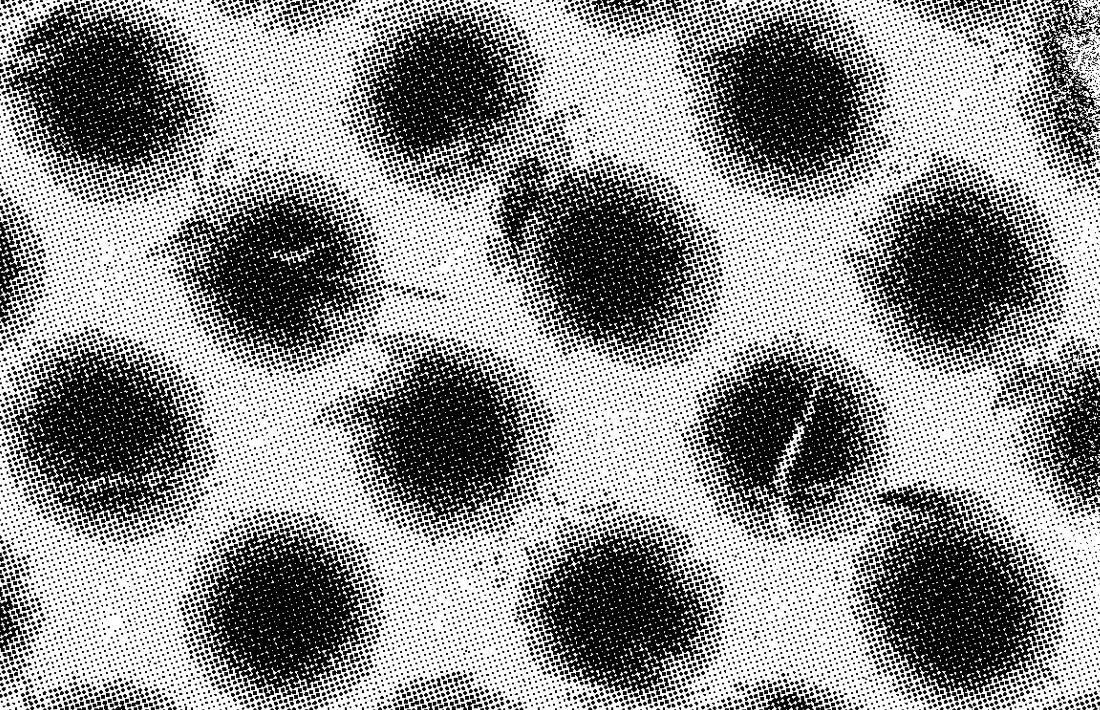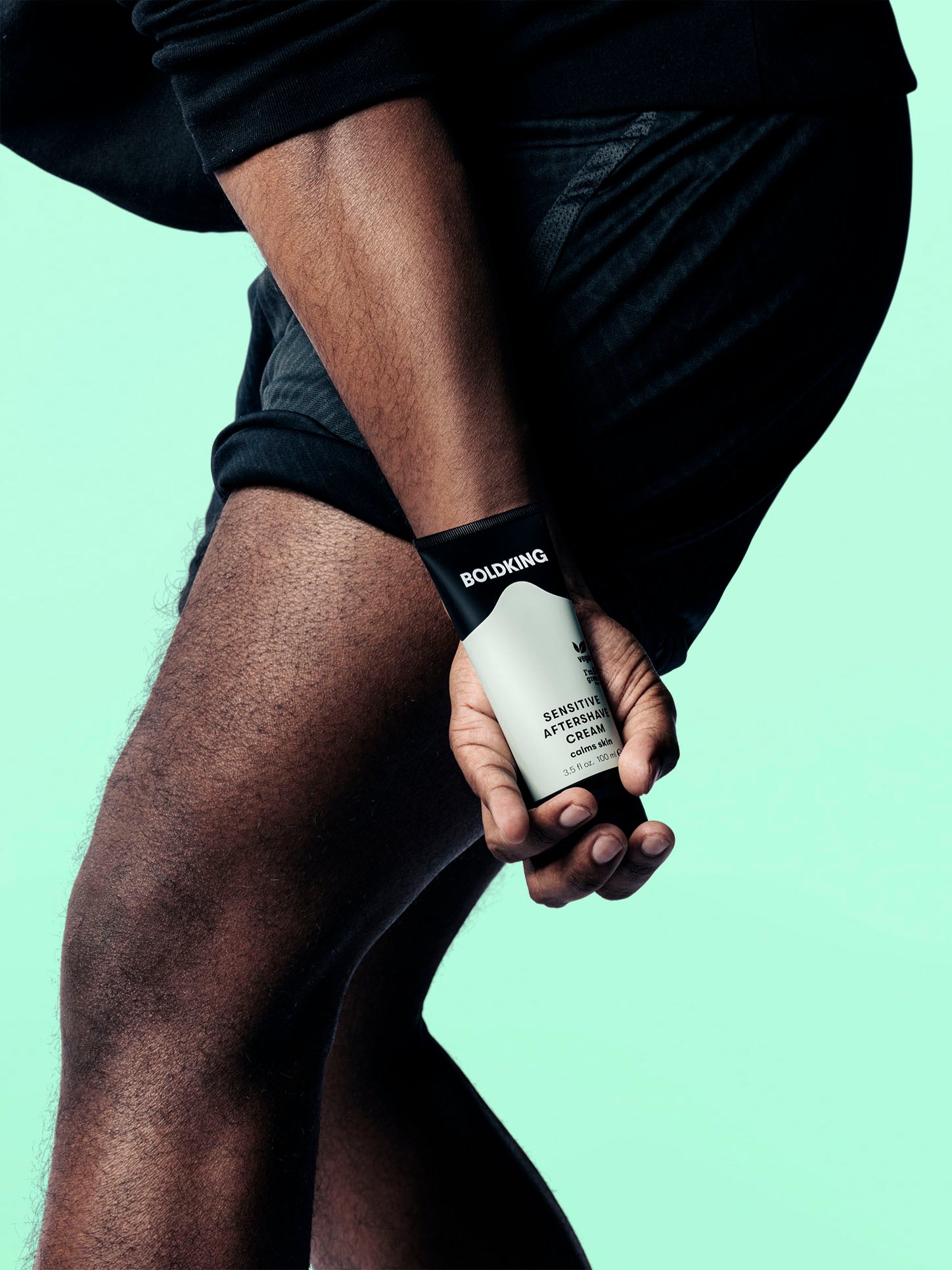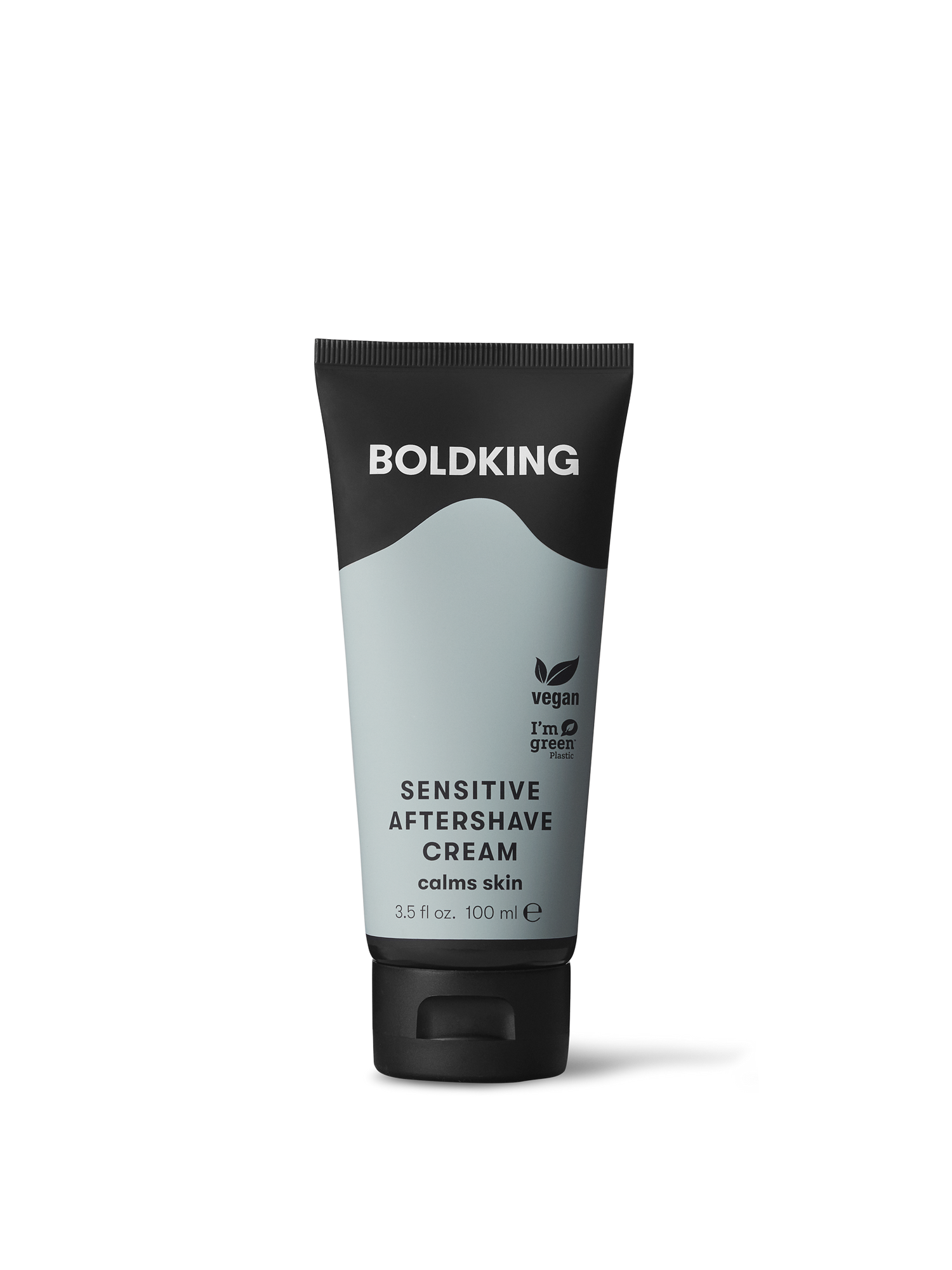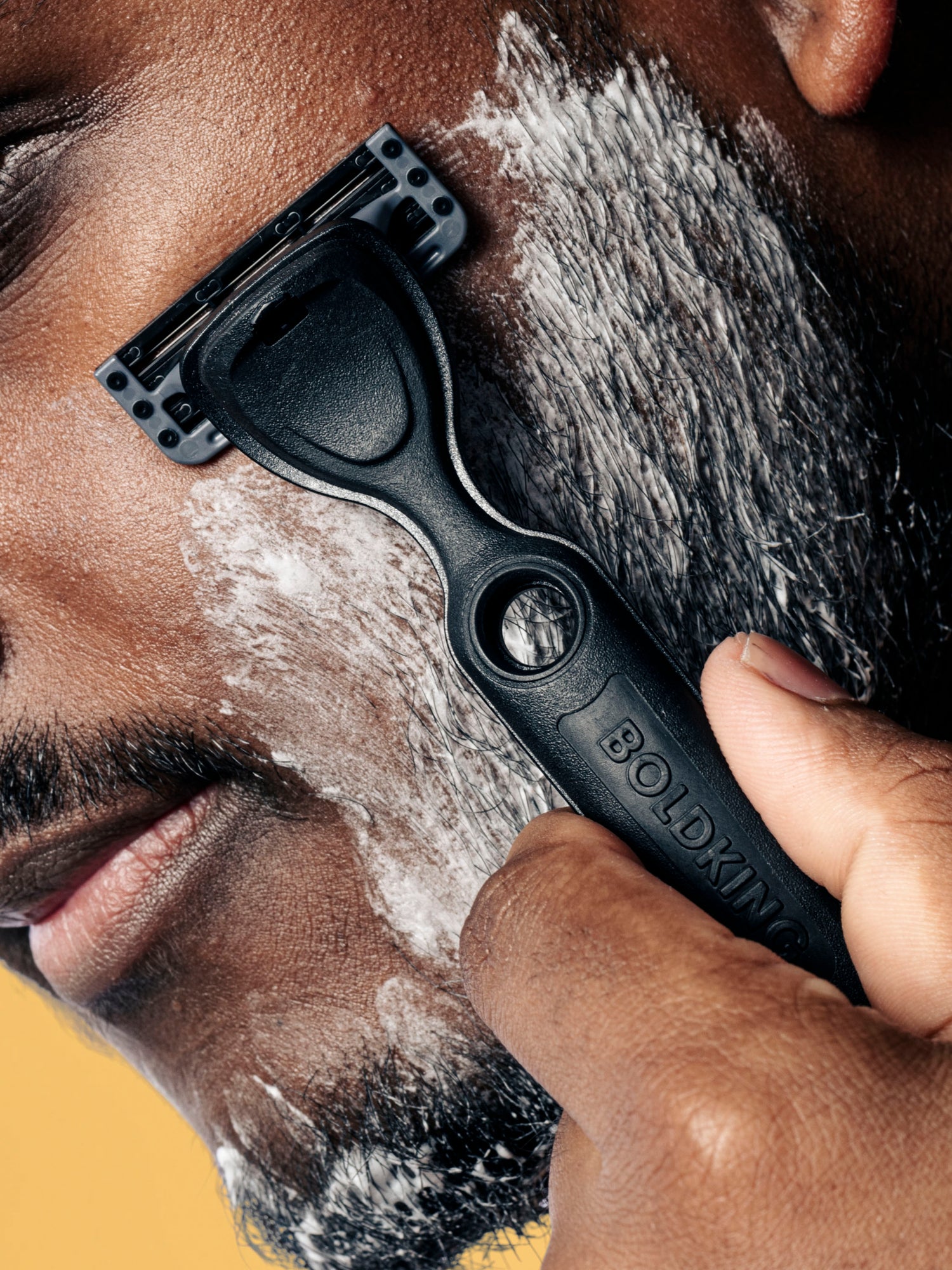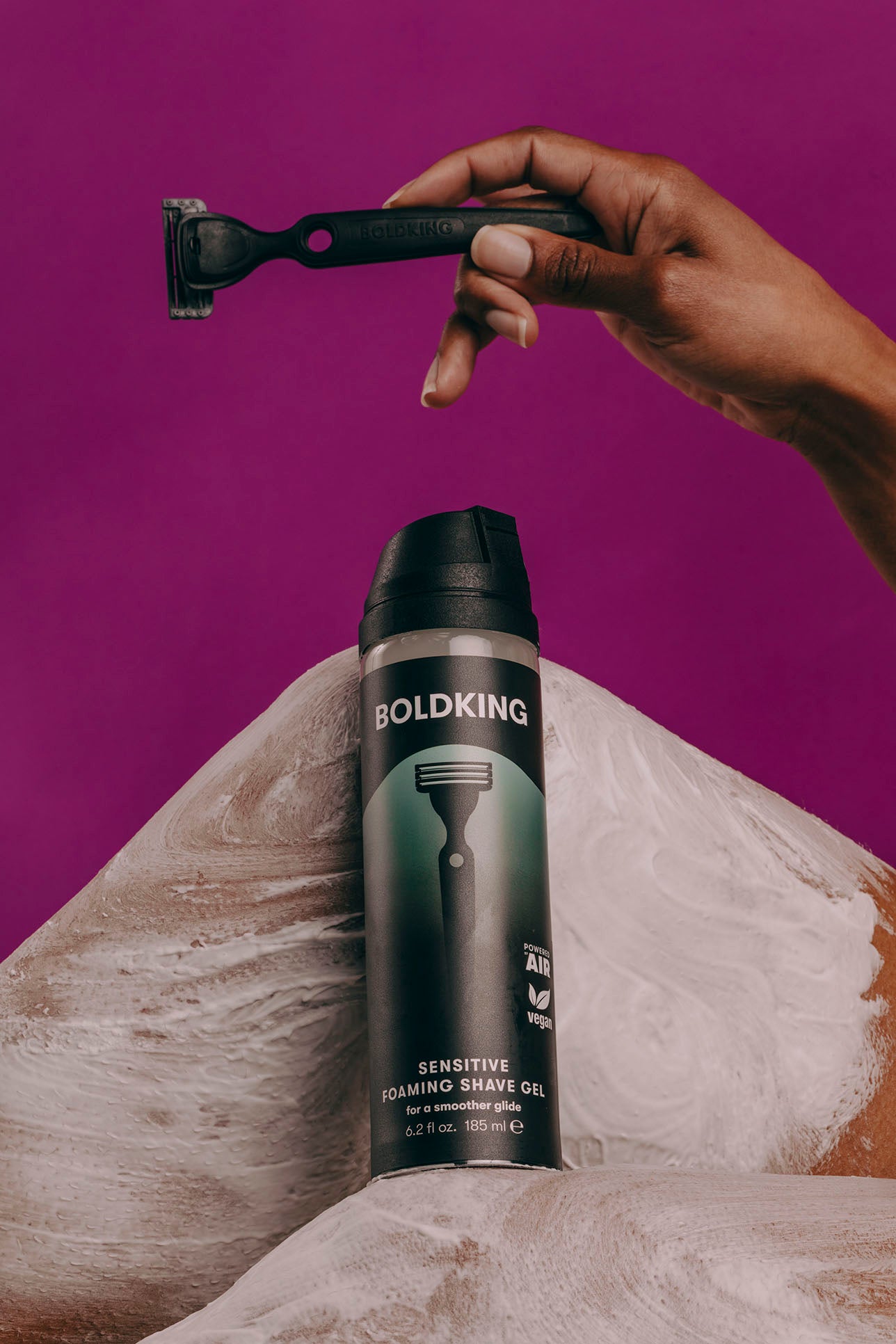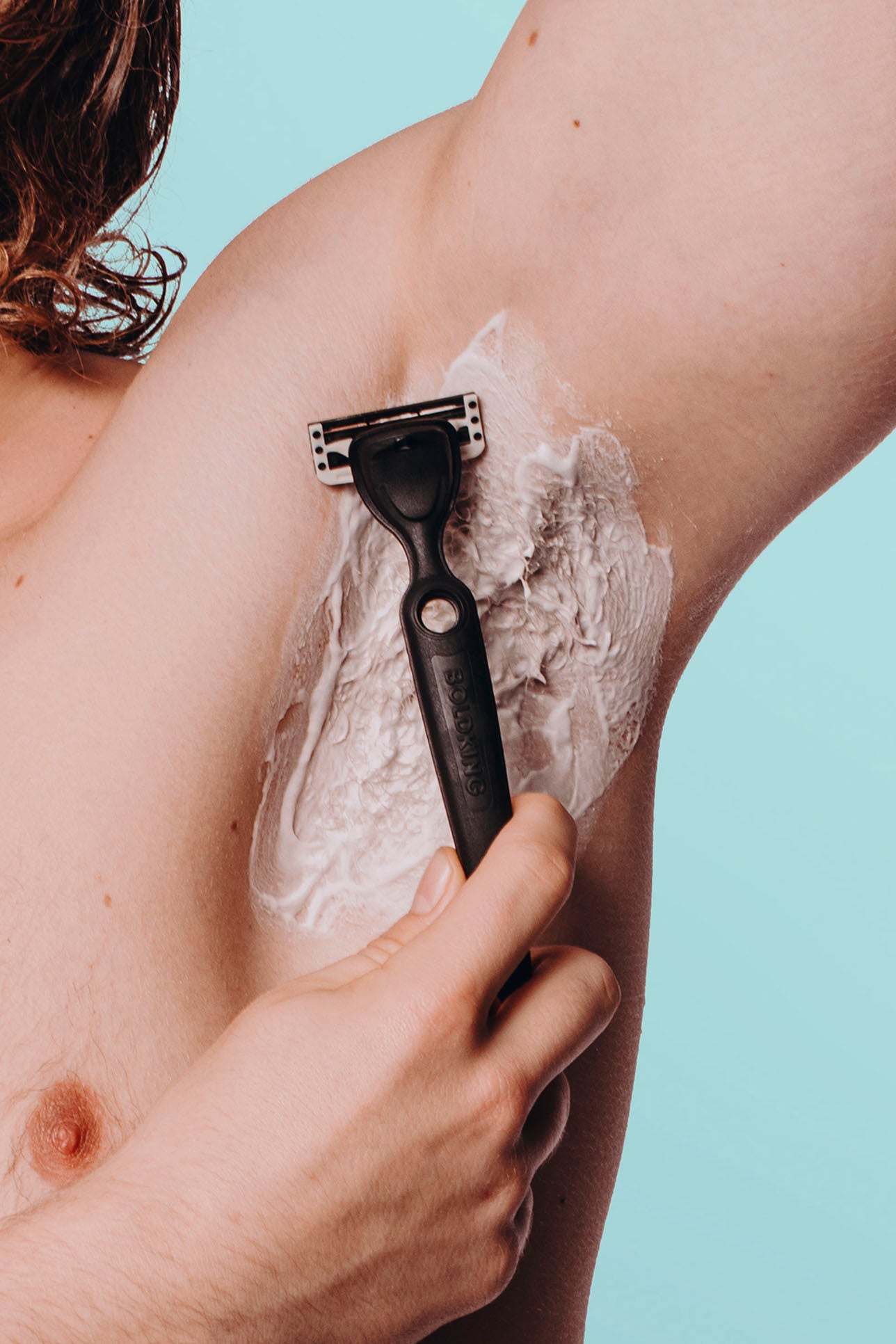If you shave, you’re bound to have had a little razor burn now and again. It’s that sore-to-touch red rash that pops up after you’ve run the razor over your skin. More than likely you went into the shave too dry, did a rush job, or wielded the razor like you were chopping onions, only for it to end in tears.
How to treat razor burn.
The key with razor burn is avoiding it, but if it's got its foot in the door, here are a few tips.
1. Soothe the skin.
First, clean and dry the skin. Use a clean towel and pat dry – the friction from rubbing could inflame the situation. An aftershave cream would normally be the post-shave go-to. But with razor burn, you may need a bit more help. Try some aloe vera oil to reduce redness. It's what's used in many skincare products.
Don't have aloe oil to hand? You can use an aloe leaf directly on the skin. Just cut one off a plant at home, or ask your local hip café if they can spare a leaf from their collection of succulents.
2. Leave it alone.
Razor burn can be itchy, and the temptation is strong to touch it. But that's helping no one. You need to leave it alone to allow it to heal, and let the itchiness subside. Particularly if you've got an ingrown hair, then you may need to let the skin rest for a few weeks to completely heal.
3. Give it some space
Even if you're able to keep your hands away from it, razor burn on your neck can take a beating from your clothes. Jackets and scarves in the winter months can give it a hard time. You may need to avoid your flyest jacket for the time being. Or wear a soft scarf to protect your neck. There's no point donning your hippest paisley jacket if all people are looking at is the pattern on your skin.
How to prevent razor burn.
Grow a beard...
Not an option?
1. Get soft.
A rash-free shave needs good prep. Otherwise, you're just asking for trouble. Take a warm shower or dunk your head into a sink of warm water and give your face a good scrubbing to open your pores. This softens your skin and hair, giving the razor a better chance of cutting your hair rather than pulling on it. Make sure to scrub up well, as this removes dead skin and bacteria, prime culprits for razor burn.
2. Foaming up.
To pull off a dry shave without irritation takes an almost superhuman effort. Make it easier on yourself by giving the razor something to glide on, like shaving gel. This helps your razor to move freely without catching on the uneven surface of your skin. Remember, friction causes fire. Don’t give it a chance to start. A good foam or gel will protect your skin and soften your hair.
3. Woah, cowboy! Easy does it.
Going hell for leather with your razor will destroy the natural barriers your skin puts up. There’s no need to be aggressive when you shave, it’s like beating yourself up. And that’s
4. Take your time.
Give yourself enough time for the shave. It’s not a sprint finish. More like a lap of honour. On average men spend between 10–25 minutes on their bathroom dealings. A five-minute shave might do you more damage than good. Shave with the grain, and if you're prone to razor burn don't stretch the skin when you shave. And if you need a quick out, just say ‘you know what, stubble never killed anyone! I’ll shave later’.
5. Avoid razor burn. Go.
Fresh blades. Fresh shave. If you feel your blade pulling rather than cutting. Then it’s time to change it. Check out our article on taking care of your razor to know what to look for. And if you can never get through a shave without a red rash, considering trying our blades for sensitive, and really sensitive skin.
6. Closing time.
Once you've finished your groom, it's time to close up the pores. This time, turn the tap to the blue side and splash your face with cold water, this will get rid of any dead skin and foam shaving left behind. Your face may feel a little tighter, but that's a good sign. It just got a wake-up call, that's all.
Final thoughts.
There were some of our tips for soothing and avoiding razor burn. If this still hasn't helped, wet shaving mightn't be for you. Try switching over to a hair trimmer and going with the stubble look. It's very masculine and according to research, makes women more likely to see you as one-night-stand material, if that's your thing.
